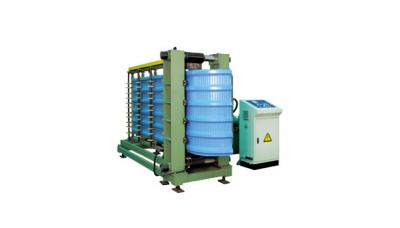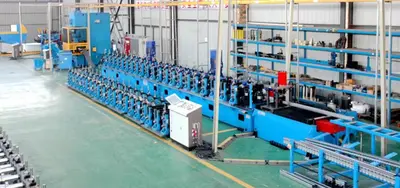EPS Sandwich Panel Line Specifications and Advantages
EPS Sandwich Panel Line: Introduction to EPS Sandwich Panels
EPS sandwich panels are made by bonding color-coated steel plates with EPS foam core material through a pressurization process on an EPS sandwich panel line. The core layer consists of polystyrene foam, which is formed by heating expandable polystyrene beads into a closed-cell structure. The core material is produced by pre-expansion, curing, molding, drying, and cutting processes. EPS can be made into foam products of varying densities and shapes, as well as foam boards of different thicknesses. These panels are widely used in construction, insulation, packaging, refrigeration, daily supplies, and industrial casting. To meet building energy-saving requirements, EPS sandwich panels are mainly used for external wall insulation and internal wall insulation.
EPS Sandwich Panel Line: Advantages and Disadvantages of EPS Sandwich Panels
Polystyrene foam plastic is divided into molded polystyrene foam (EPS) and extruded polystyrene foam (XPS). Among them, EPS is the most widely used due to its relatively low cost. However, while these materials are required to be fire-retardant, their inherent fire performance still classifies them as B2-level combustible products, meaning the material cannot completely prevent burning, cracking, spreading, or dripping, and it may emit toxic gases. Therefore, there is a significant fire hazard.
EPS foam sandwich panels have advantages such as being lightweight, high flatness, low thermal conductivity, impact resistance, and affordable pricing, which made them a common material for external wall insulation and factory enclosure in the past few years. However, with the frequent occurrence of building fires and increasingly strict fire safety inspections, the use of EPS panels has been gradually restricted.
As market demand and technological advancements grow, products that meet both insulation and fire-retardant requirements have emerged, such as rock wool, glass wool, and polyurethane materials. However, as the saying goes, "There is no perfect product." Each material has its advantages and disadvantages when it comes to insulation and fire resistance.
EPS Sandwich Panel Line: Comparison of Thermal Insulation Properties of Different Core Materials
Comparison of Common Sandwich Panel Insulation Properties |
Product Name | Polyurethane Sandwich Panel | EPS Sandwich Panel | Rock Wool Sandwich Panel | Glass Wool Sandwich Panel |
Insulation Level | Excellent | Good | Moderate | Poor |
EPS Sandwich Panel Line: Comparison of Fire Resistance of Different Core Materials
Comparison of Common Sandwich Panel Fire Resistance |
Product Name | Polyurethane Sandwich Panel | EPS Sandwich Panel | Rock Wool Sandwich Panel | Glass Wool Sandwich Panel |
Fire Resistance | Flame Retardant (Moderate) | Combustible (Poor) | Non-combustible (Excellent) | Non-combustible (Good) |
Each product has its own strengths and weaknesses, and there is no perfect material—only suitable applications. The different uses and pricing of materials lead to varied choices when selecting the right material. In daily use, we can select different products based on usage conditions to meet the required performance while also ensuring reasonable investment.


 CN
CN
 EN
EN
 fr
fr  de
de  es
es  it
it  ru
ru  pt
pt  ar
ar  th
th  pl
pl  ro
ro 







 Call us on:
Call us on:  Email Us:
Email Us:  #1809, Jianhu Rd, Keqiao, Shaoxing, Zhejiang, China
#1809, Jianhu Rd, Keqiao, Shaoxing, Zhejiang, China 